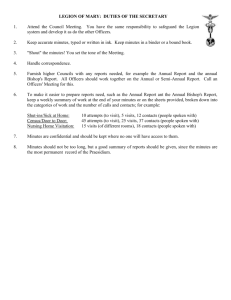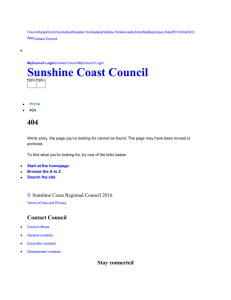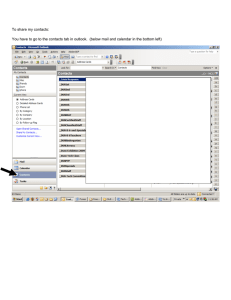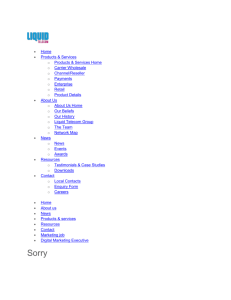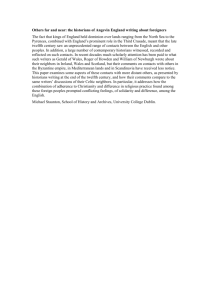A Health Care System... Creating a Health Care System
advertisement
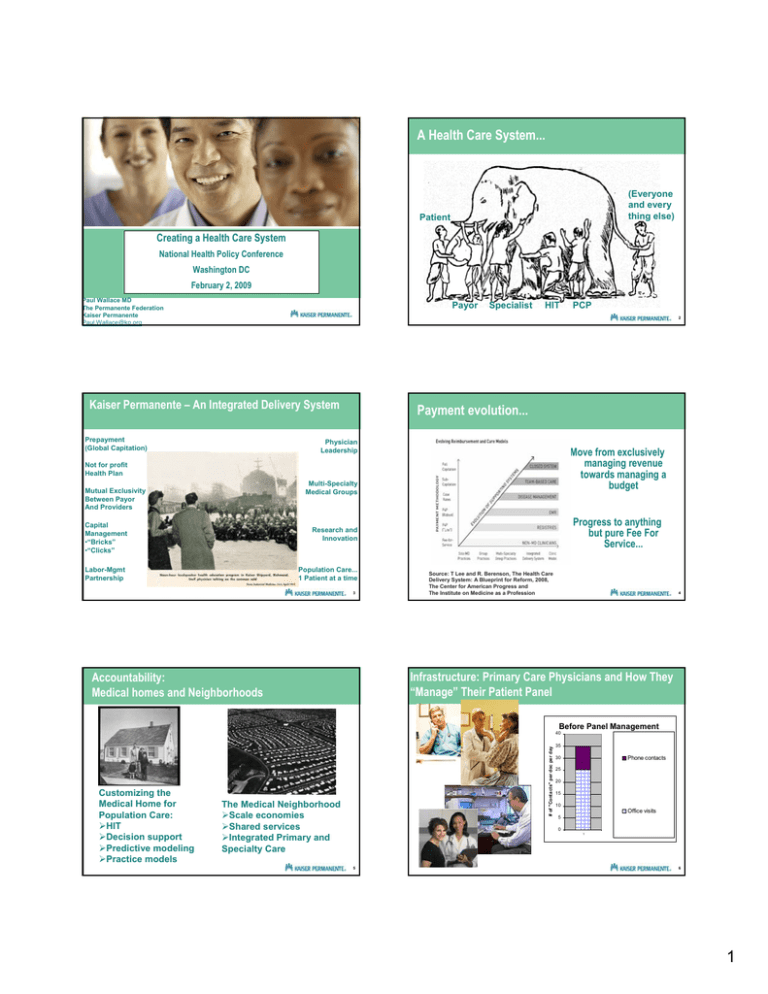
A Health Care System... (Everyone and every thing else) Patient Creating a Health Care System National Health Policy Conference Washington DC February 2, 2009 Paul Wallace MD The Permanente Federation Kaiser Permanente Paul.Wallace@kp.org Payor Prepayment (Global Capitation) PCP Payment evolution... Physician Leadership Manage Budgets, not Revenue Accountability for both Primary and Specialty Care Mutual Exclusivity Between Payor And Providers Capital Management •“Bricks” •“Clicks” HIT 2 Kaiser Permanente – An Integrated Delivery System Not for profit Health Plan Specialist Move from exclusively managing revenue towards managing a budget Multi-Specialty Medical Groups Progress to anything but pure Fee For Service... Research and Innovation Infrastructure Investment Knowledge Generation Labor-Mgmt Partnership Population Care... 1 Patient at a time 3 Source: T Lee and R. Berenson, The Health Care Delivery System: A Blueprint for Reform, 2008, The Center for American Progress and The Institute on Medicine as a Profession 4 Infrastructure: Primary Care Physicians and How They “Manage” Their Patient Panel Accountability: Medical homes and Neighborhoods Before Panel Management Customizing the Medical Home for Population Care: ¾HIT ¾Decision support ¾Predictive modeling ¾Practice models # of "Contacts" per doc per day 40 The Medical Neighborhood ¾Scale economies ¾Shared services ¾Integrated Primary and Specialty Care 35 Phone contacts 30 25 20 15 10 Office visits 5 0 1 5 6 1 Diversified Access: Time and “Touches” Average Daily "Touches" 80 US mail contacts No. of Daily Contacts 70 RN and HCT contacts 60 Email contacts 50 Phone contacts 40 Annual health goals 30 "Fast Track"'s 20 Group visits 10 0 7 Email contacts Phone contacts 300 Annual health goals 200 "Fast Track"'s Group visits 100 Office visits 0 Email contacts 50 Check lab results Access health Information Annual health goals 30 Clinicals Review eligibility & benefits "Fast Track"'s 20 Group visits 10 Billing Account summary Office visits 1 9 Knowledge Generation: Managing the “Gray Areas”... ? The last 115 new technologies examined: 7 Insufficient evidence because the evidence is: 10 Knowledge Generation: Managing the “Gray Areas”... The last 115 new technologies examined: 38 Scheduling Registration Phone contacts 40 Dr G. Livaudais, Maui Lani Clinic, Hawaii, “Gerard.F.Livaudais @KP.ORG” Medically appropriate Care Delivery Core Make/change appointments Send email to doctor RN and HCT contacts 60 0 1 Access medical record US mail contacts 70 US mail contacts No. of Daily Contacts Minutes www.kp.org Member Web Portal 80 RN-HCT contacts 8 Expanded Online Access for Members Average Daily "Touches" 500 400 Dr G. Livaudais, Maui Lani Clinic, Hawaii, “Gerard.F.Livaudais @KP.ORG” Infrastructure: Members Can Actively Participate in Care Diversified Access: Time and “Touches” Physician Time Use When Care is More Diversified Office visits 1 Generally not medically appropriate Medically appropriate 7 38 Insufficient evidence because the evidence is: A. Of insufficient quantity 66 and/or quality A. Of insufficient quantity 66 and/or quality B. Conflicting or inconsistent 3 B. Conflicting or inconsistent 3 C. There is no evidence 1 C. There is no evidence 1 11 11 Generally not medically appropriate 12 12 2 Moving towards an Integrated Delivery System: Key investments of $$$ and effort Comparative Population Effectiveness: The Kaiser Permanente National Joint Replacement Registry [Evaluation] feedback changed practice with respect to: implant selection, minimally invasive procedures, uncemented knees, and surgical indications and preoperative care. Paxton,EW et al; The Permanente Journal 15:12-16, 2008 13 Is there critical mass of change to collectively create a new Health Care System? Shift to a focus on managing budgets, not revenue: ¾ Evolve beyond 100% FFS Care management fees Episode pricing Shared accountability for both primary and specialty care: ¾ Build Medical Neighborhoods Population management Referral management Infrastructure Investment: ¾ HIT – move beyond the EMR Registries/Health Information Exchange Personal Health Records Knowledge Generation: ¾ Rapid Learning/“Managing the Gray Areas” Comparative population effectiveness Care models 14 The Patient at the Center of Care Payment Evolution from FFS HIT for Population and Personal Care Patient Medical Neighborhoods Payor Specialist HIT (Everyone and every thing else) PCP Illustration by Tom Benthin, Copyright © Kaiser Permanente 15 16 3
